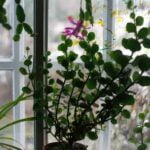Are you looking to enhance the beauty of your outdoor space? Landscaping plants are a great way to add color, texture, and visual interest to your garden or yard. In this article, we will explore landscaping plants ideas and provide valuable information on the different varieties available, factors to consider when choosing the right plants for your landscape, recommendations for specific climates, as well as tips for designing and maintaining a beautiful and cohesive outdoor space.
When it comes to landscaping plants ideas, there is a wide range of options to choose from. Whether you’re looking for low-maintenance plants ideal for busy homeowners or seeking options for creating a private and tranquil outdoor space, understanding the importance of landscaping plants is essential in creating an inviting and visually appealing landscape.
In the following sections, we will delve into the different types of landscaping plants available, factors to consider when selecting the right plants for your specific landscape, as well as recommendations for different regions and climates. Additionally, we will provide tips on designing with landscaping plants and offer advice on proper maintenance to ensure their longevity and vibrancy. Let’s embark on this journey of exploring the world of landscaping plants and discover how they can transform your outdoor space.
Types of Landscaping Plants
Landscaping plants are an essential component of any outdoor space, adding beauty, color, and texture to the landscape. There is a wide variety of landscaping plants to choose from, each with its own unique characteristics and requirements. Understanding the different varieties available can help homeowners make informed decisions when selecting plants for their landscape.
One common type of landscaping plant is the flowering shrub, which adds vibrant colors and visual interest to the garden throughout the year. Examples of popular flowering shrubs include roses, hydrangeas, and azaleas. These plants are known for their beautiful blooms and often require regular pruning to maintain their shape and promote healthy growth.
Another popular choice for landscaping plants is ornamental grasses, which add movement and texture to the landscape. Ornamental grasses come in a range of sizes and colors, making them versatile options for various design styles. They also require minimal maintenance, making them ideal for homeowners looking for low-maintenance landscaping plants.
In addition to flowering shrubs and ornamental grasses, trees are also a key element in many landscapes. Trees provide shade, privacy, and vertical interest in the garden. Some popular choices for landscaping trees include maple trees, oak trees, and flowering cherry trees. When selecting trees for your landscape, it’s important to consider factors such as size, growth rate, and maintenance requirements.
| Landscaping Plant Type | Examples |
|---|---|
| Flowering Shrubs | Roses, Hydrangeas, Azaleas |
| Ornamental Grasses | Fescue Grass, Maiden Grass, Pampas Grass |
| Trees | Maple Trees, Oak Trees, Flowering Cherry Trees |
Choosing the Right Plants for Your Landscape
When it comes to choosing the right plants for your landscape, there are several factors that should be considered to ensure the success of your garden. From the climate and soil conditions to your personal preferences and maintenance abilities, selecting the perfect landscaping plants is crucial in achieving a beautiful and thriving outdoor space.
Climate and Soil Conditions
One of the most important factors to consider when choosing landscaping plants is the climate and soil conditions of your area. Different plants thrive in different climates, so it’s essential to choose varieties that are suitable for the temperature, humidity, and sunlight levels of your region. Additionally, understanding the type of soil in your garden will help you select plants that will grow well in that specific soil composition.
Personal Preferences and Maintenance Abilities
Another key factor to consider when choosing landscaping plants is your personal preferences and maintenance abilities. Think about the overall style or theme you want for your outdoor space, as well as any specific colors, textures, or scents you prefer. Additionally, consider how much time and effort you are willing to invest in maintaining your garden. If you have a busy schedule or limited gardening experience, opt for low-maintenance plants that require minimal care.
Aesthetic Appeal and Functionality
Lastly, consider the aesthetic appeal and functionality of the landscaping plants you choose for your landscape. Think about how each plant will contribute to the overall look of your garden, whether it’s through its flowers, foliage, or structure.
Additionally, consider how each plant can serve a functional purpose in your outdoor space-whether it’s providing shade, attracting pollinators, or creating privacy. By carefully considering these factors, you can choose landscaping plants that not only enhance the beauty of your landscape but also meet your practical needs.
Low-Maintenance Landscaping Plants
When it comes to landscaping, not everyone has the time or desire to devote countless hours to maintaining their outdoor space. For busy homeowners, low-maintenance landscaping plants are an ideal choice. These types of plants require minimal care and attention, making them perfect for those with a packed schedule. Here are some ideas for low-maintenance landscaping plants that will keep your outdoor space looking beautiful with minimal effort.
Drought-Tolerant Plants
If you live in a region with hot, dry summers, choosing drought-tolerant plants is essential. These types of plants are designed to thrive in arid conditions and can go for extended periods without water. Some popular options for drought-tolerant landscaping plants include lavender, yucca, and ornamental grasses. Not only do these plants require little watering, but they also add texture and visual interest to your landscape.
Native Plants
One of the best ways to ensure low-maintenance landscaping is by choosing native plants that are well-suited to your region’s climate and soil conditions. Native plants have evolved to thrive in their specific environment, which means they require less water, fertilization, and maintenance overall. Examples of native landscaping plants include black-eyed susans, coneflowers, and butterfly bushes. By incorporating these into your landscape design, you can create a beautiful outdoor space that practically takes care of itself.
Evergreen Shrubs
For year-round greenery without the hassle of seasonal maintenance, consider incorporating evergreen shrubs into your landscape design. Evergreens retain their foliage throughout the year, providing structure and color regardless of the season. Options such as boxwood, juniper, and holly are not only easy to care for but also offer a timeless appeal that can elevate the overall aesthetic of your outdoor space.
By choosing low-maintenance landscaping plants like drought-tolerant varieties, native species, and evergreen shrubs, busy homeowners can enjoy a beautiful outdoor space without the added stress of constant upkeep. With careful planning and selection of the right plants for your specific climate and soil conditions, you can create a stunning landscape that enhances your home’s exterior while requiring minimal effort on your part.
Landscaping Plants for Specific Climates
When choosing landscaping plants, it is crucial to consider the specific climate of the area where you live. Certain plants thrive in specific climates and may struggle in others. For example, desert plants like cacti and succulents are ideal for hot, dry climates, while ferns and hostas thrive in cooler, damp environments. Understanding the unique needs of various plant species will help you make informed decisions when planning your landscape.
In regions with a tropical climate, consider lush, vibrant options like hibiscus, bougainvillea, and palms. These plants are well-suited for hot, humid conditions and will add a tropical flair to your outdoor space. In contrast, areas with colder climates may benefit from hardy evergreens such as juniper and spruce that can withstand harsh winter weather.
It is essential to research the specific USDA hardiness zone of your region to identify which plants are most likely to flourish in your local climate. Consulting with a gardening expert or nursery professional can also provide valuable insight into the best landscaping plants for your specific climate.
| Region | Recommended Landscaping Plants |
|---|---|
| Tropical Climate | Hibiscus Palms |
| Colder Climate | Juniper Hardy Evergreens |
Designing With Landscaping Plants
When it comes to designing a beautiful and cohesive landscape, the choice of landscaping plants is crucial. The right selection can bring color, texture, and visual interest to your outdoor space. Here are some tips for creating a visually appealing landscape with the use of landscaping plants:
- Consider the overall aesthetic: Before choosing any landscaping plants, it’s important to consider the overall aesthetic you want to achieve. Are you aiming for a natural, wild look or a more structured and formal design? Understanding your desired aesthetic will help guide your plant selection.
- Pay attention to scale and proportion: When designing with landscaping plants, it’s essential to consider the scale and proportion of each plant in relation to your outdoor space. Taller plants can add height and vertical interest, while lower-growing plants can be used as ground cover or border plants.
- Think about seasonal interest: To create a dynamic landscape that looks great year-round, incorporate a mix of landscaping plants that offer seasonal interest. This could include flowering shrubs for spring color, evergreen trees for winter structure, and ornamental grasses for fall texture.
In addition to these tips, it’s also important to consider the specific growing conditions of your outdoor space when selecting landscaping plants. Factors such as sunlight exposure, soil type, and climate will all play a role in determining which plants are suitable for your landscape. By carefully considering these factors and following these tips, you can create a beautiful and cohesive landscape with the use of landscaping plants ideas.
Landscaping Plants for Privacy
When it comes to creating a private and tranquil outdoor space, the choice of landscaping plants plays a key role. Whether you have nosy neighbors or just want to enjoy some peace and quiet in your own yard, selecting the right plants can provide you with the privacy you desire. There are various landscaping plants ideas that can help you achieve this goal while also adding beauty to your outdoor space.
One option for creating privacy with landscaping plants is to use tall hedges or shrubs. These can act as a natural barrier, blocking the view from outside while also adding texture and greenery to your landscape. Popular options for tall hedges include arborvitae, Leyland cypress, and boxwood. These plants can be strategically placed around the perimeter of your yard to create a sense of seclusion.
In addition to hedges and shrubs, trees can also be used to provide privacy in your outdoor space. Consider planting evergreen trees such as pine or spruce, which maintain their foliage year-round and offer continuous coverage. Bamboo is another great option for creating a private oasis in your yard.
It grows quickly and creates a dense screen that can block out unwanted views. By carefully selecting and placing these landscaping plants, you can create a peaceful retreat that allows you to fully enjoy your outdoor space in privacy.
The Importance of Proper Maintenance
Proper maintenance is essential for ensuring the health and longevity of your landscaping plants. Without regular care, even the most beautiful and vibrant plants can wither and die. To help you keep your outdoor space looking its best, here are some tips for caring for your landscaping plants:
1. Watering: Different plants have different water requirements, so it’s important to know the needs of each species in your landscape. Be sure to water your plants deeply but infrequently to encourage deep root growth. Consider investing in a drip irrigation system to ensure consistent watering, especially during hot summer months.
2. Pruning: Regular pruning is crucial for maintaining the shape, size, and overall health of your landscaping plants. Use clean, sharp tools to remove dead or damaged branches, promote new growth, and improve air circulation within the plant.
3. Fertilizing: Providing the right nutrients is essential for helping your landscaping plants thrive. Choose a fertilizer that matches the specific needs of your plants and apply it according to the instructions on the packaging.
4. Pest and disease control: Keep an eye out for any signs of pests or diseases affecting your landscaping plants. Take proactive measures to prevent infestations and treat any issues promptly to avoid spreading.
By following these maintenance tips, you can ensure that your landscaping plants remain healthy and vibrant, enhancing the beauty of your outdoor space for years to come. Remember that proper care also contributes to a thriving ecosystem within your landscape, promoting biodiversity and sustainability.
Conclusion
In conclusion, landscaping plants offer a wide range of benefits for your outdoor space. Not only do they add beauty and visual interest to your landscape, but they also provide functional advantages such as privacy, shade, and erosion control. By exploring the different types of landscaping plants available and considering factors such as maintenance requirements and climate suitability, you can create a beautiful and cohesive outdoor environment that enhances your home.
When choosing landscaping plants for your outdoor space, it’s important to consider the specific needs of your region. Selecting plants that are well-suited to your climate will ensure their long-term success and minimize the need for excessive maintenance or specialized care. Additionally, incorporating low-maintenance options can be especially beneficial for busy homeowners who want to enjoy a beautiful landscape without dedicating extensive time to upkeep.
Proper maintenance is essential for sustaining the health and beauty of your landscaping plants. Regular watering, pruning, weeding, and fertilizing will help ensure that your plants thrive year after year.
By embracing the beauty and benefits of landscaping plants in your outdoor space, you can create a welcoming and tranquil environment that enhances both the aesthetic appeal and functionality of your home. Whether you’re looking to add privacy with tall hedges or create a vibrant garden with colorful flowers, there are endless landscaping plant ideas to explore and incorporate into your landscape design.
Frequently Asked Questions
What Is the Best Low-Maintenance Landscaping?
The best low-maintenance landscaping typically includes a combination of native plants, mulch, and hardscaping. Native plants are well-adapted to the local climate and soil, requiring less water and maintenance.
Mulch helps retain moisture, suppress weeds, and improve soil health. Hardscaping features like pathways, stone walls, or decorative pebbles can reduce the amount of lawn or plants that need attention.
What Is the Most Low-Maintenance Plant?
When it comes to low-maintenance plants, succulents are often a popular choice. These plants have fleshy leaves or stems that store water, allowing them to survive in dry conditions with minimal watering. Additionally, some ornamental grasses and perennial flowers can also be low-maintenance options as they require minimal pruning and care once established.
What Month Is Best to Plant Landscaping?
The best month to plant landscaping can vary depending on the region and climate. In general, early spring or fall are good times for planting as the weather is generally mild and there is more consistent moisture in the soil.
This allows plants to establish their root systems before the stress of summer heat or winter cold sets in. It’s important to consider the specific needs of the plants being planted as well as any potential frost dates in your area before deciding on a planting time.

Welcome to my gardening blog! I am passionate about plants and enjoy sharing my knowledge and experiences with others. In this blog, I will write about everything related to gardening, from tips on how to get started to updates on my own garden projects.





